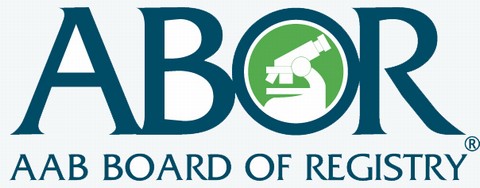IMPORTANT NOTICE - CDC LOCS:
Swine Flu
12-18-09
CDC LOCS Update: Questions and Answers Regarding Respiratory Protection For Preventing 2009 H1N1 Influenza Among Healthcare Personnel to supplement previously released updated interim guidance on infection control measures to help prevent transmission of 2009 H1N1 influenza in healthcare facilities (reference CDC LOCS Update: Interim Guidance on Infection Control Measures for 2009 H1N1 Influenza in Healthcare Settings, Including Protection of Healthcare Personnel, sent on November 15, 2009).
These questions and answers (Qs & As) provide additional information intended to assist healthcare facilities in optimizing implementation of recommended respiratory protection practices in the context of shortages of respiratory protection equipment. The information contained in this document applies uniquely to the special circumstances of the current 2009 H1N1 pandemic during the fall and winter of 2009-2010, and will be updated as new information becomes available during the course of this influenza season.
What has been added?
The above-referenced Qs & As document was recently updated to include a discussion addressing the use of industrial N95 respirators when splashes or sprays of potentially infectious body fluids are anticipated.
Industrial N95 respirators are not designed to protect the face and eyes. For this reason, whenever industrial N95 respirators are used in settings where there is potential for splashes or sprays of potentially infectious body fluids, additional personal protective equipment is required. In the case of disposable N95 respirators, use of a face shield is required to assure against fluid penetration and for eye protection. When using half facepiece reusable elastomeric respirators, eye protection (goggles or a face shield) is required.
10-16-09
Updated Interim Guidance on Infection Control Measures for 2009 H1N1 Influenza in Healthcare Settings, Including Protection of Healthcare Personnel and two related Questions and Answers (Q&A) documents. The updated interim guidance is intended for healthcare personnel, including clinical laboratorians and others who may have direct contact with patients or contaminated material. The interim guidance describes a hierarchy of controls to prevent influenza transmission through elimination of potential exposures, engineering controls, administrative controls and personal protective equipment (PPE).
10-9-09
Interim Guidance for Influenza Surveillance: Prioritizing RT-PCR Testing in Laboratories.
This interim guidance describes the prioritization of patient samples to be tested by rRT-PCR for SURVEILLANCE purposes* and is intended for state and local health departments, hospitals, and clinicians participating in influenza surveillance activities.
* Prioritization of patient samples to be tested by rRT-PCR for SURVEILLANCE
9-11-09 - New and Updated Interim Guidance and Links to Resources for Clinicians
8-21-09 - MMWR - Use of Influenza A (H1N1) 2009 Monovalent Vaccine, Recommendations of the Advisory Committee on Immunization Practices (ACIP), 2009
The Centers for Disease Control and Prevention’s Laboratory Outreach and Communication System (LOCS) is providing a link to the August 21, 2009 (early release), Morbidity and Mortality Weekly Report article, "Use of Influenza A (H1N1) 2009 Monovalent Vaccine, Recommendations of the Advisory Committee on Immunization Practices (ACIP), 2009."
8-14-2009 - Interim Biosafety Guidance for All Individuals Handling Clinical Specimens or Isolates Containing 2009-H1N1 Influenza A Virus (Novel H1N1), as well as Vaccine Strains
This guidance is for all individuals who may perform diagnostic and research activities including rapid diagnostic testing at the point of care with 2009-H1N1 influenza A virus (Novel H1N1).
What has changed?
- Revisions concerning required PPE and engineering and work practice controls are included as follows:
- For those performing rapid immunoassay tests for influenza, splash protection is required.
- For those performing more complex procedures (e.g., direct or indirect fluorescent antibody tests [DFA, IFA], culture, molecular assays), a Class II biosafety cabinet (BSC) in a biosafety level-2 (BSL-2) laboratory is required. Biosafety level-3 (BSL-3) practices are no longer required for viral isolation.
- Updated nomenclature for the virus, now referred to as 2009-H1N1 Influenza A Virus (Novel H1N1), is incorporated throughout the guidance.
Link to guidance: http://www.cdc.gov/h1n1flu/guidelines_labworkers.htm
8-6-2009 - MMWR: Evaluation of Rapid Influenza Diagnostic Tests
7/29/09 - Interim Guidance for the Detection of Novel Influenza A Virus Using Rapid Influenza Diagnostic Tests
7/2/09 - Manuscript
The Centers for Disease Control and Prevention’s Laboratory Outreach and Communication System (LOCS) is providing a link to the manuscript, "Transmission and Pathogenesis of Swine-Origin 2009 A(H1N1) Influenza Viruses in Ferrets and Mice," that was published online, July 2, 2009, in Science. Results from these animal studies indicate that close contact is the most efficient means of transmission of this H1N1 virus. They further suggest an increased potential for lower respiratory and intestinal tract involvement with this infection. Similarly, human cases to date have indicated that a significant proportion of individuals infected with the H1N1 virus have exhibited gastrointestinal distress and vomiting.
http://wwwn.cdc.gov:80/DLS/LOCS/ViewUploadedDocument.aspx?DLS_Upload_Files_id=520
6-4-09 - Questions and Answers About CDC's Online Reporting
Recently Posted or Updated Laboratory-Related Guidance Documents - 6/03/09
Guidance for Public Health Reporting of Test Results for Novel H1N1 Influenza - 5/12/09
As testing for novel H1N1 flu moves from health departments to private testing locations, it is imperative that testing sites are informed regarding the guidelines for reporting test results for novel H1N1 flu to state health departments for epidemiologic surveillance purposes. The state health departments subsequently report to CDC. CDC Guidance for Laboratories can be found at http://www.cdc.gov/h1n1flu/lab/. Laboratories conducting testing for novel H1N1 flu should report results as required by their state and the state of the tested individual per normal surveillance protocol. Before intiating novel H1N1 testing, contact your state public health department to obtain their protocols for clinical and epidemiological data collection and specimen collection and transport.
Updates to the CDC Swine Flu Website - 4/29/09
-
UPDATED Interim Guidance on Case Definitions for Swine Influenza A (H1N1) Human Case Investigations.
-
Swine Flu: Emergency Use Authorization (EUA) of Medical Products and Devices.
CDC protocol of realtime RTPCR for swine influenza A(H1N1) - 4/28/09
Distribution of RT-PCR Primers and Probes for Detection of Swine Influenza A/H1N1 Virus
As a WHO Collaborating Center for Influenza, CDC is providing information and documents on its diagnostic protocols for detection and characterization of Swine Influenza, including: "CDC Realtime RTPCR (rRTPCR) Protocol for Detection and Characterization of Swine Influenza", "Protocol for Antiviral Susceptibility Testing by PyroSequencing", and "CDC Real-time RTPCR Swine H1 Assay ordering Instructions". These materials can be accessed at through the following links........
http://www.who.int/csr/resources/publications/swineflu/realtimeptpcr/en/index.html
http://www.who.int/csr/resources/publications/swineflu/pyrosequencing_protocol/en/index.html
http://www.who.int/csr/resources/publications/swineflu/sequencing_primers/en/index.html
The kits are to be sent overnight when practical. All kit requests must go to fluorder@cdc.gov. There is no charge for the kits, and kits will begin shipping on or about 05/01/2009. There are approximately 1000 reactions per kit including those used for controls. Any additional technical questions regarding the kits may be sent to flusupport@cddc.gov.
Interim Guidance on Specimen Collection and Processing for Patients with Suspected Swine Influenza A (H1N1) Virus Infection - 4/28/09
Guidance below can be accessed at: http://www.cdc.gov/swineflu/specimencollection.htm
Situation Update and Laboratory Guidance from CDC on Swine Flu - 4/27/2009
Investigation and Interim Recommendations:
Swine Influenza (H1N1)
CDC, in collaboration with public health officials in California and Texas, is investigating cases of febrile respiratory illness caused by swine influenza (H1N1) viruses. As of 11 AM (EDT) April 25, 2009, 8 laboratory confirmed cases of Swine Influenza infection have been confirmed in the United States. Four cases have been reported in San Diego County, California. Two cases have been reported in Imperial County California. Two cases have been reported in Guadalupe County, Texas. Of the 8 persons with available data, illness onsets occurred March 28-April 14, 2009. Age range was 7-54 y.o. Cases are 63% male. The viruses contain a unique combination of gene segments that have not been reported previously among swine or human influenza viruses in the U.S.or elsewhere. At this time, CDC recommends the use of oseltamivir or zanamivir for the treatment of infection with swine influenza viruses. The H1N1 viruses are resistant to amantadine and rimantadine but not to oseltamivir or zanamivir. It is not anticipated that the seasonal influenza vaccine will provide protection against the swine flu H1N1 viruses. CDC has also been working closely with public health officials in Mexico, Canada and the World Health Organization (WHO). Mexican public health authorities have reported increased levels of respiratory disease, including reports of severe pneumonia cases and deaths, in recent weeks. CDC is assisting public health authorities in Mexico by testing specimens and providing epidemiological support. As of 11:00 AM (EDT) April 25, 2009, 7 specimens from Mexico at CDC have tested positive for the same strain of swine influenza A (H1N1) as identified in U.S. cases. However, no clear data are available to assess the link between the increased disease reports in Mexico and the confirmation of swine influenza in a small number of specimens. WHO is monitoring international cases. Further information on international cases may be found at: http://www.who.int/csr/don/2009_04_24/en/index.html.
Clinicians should consider swine influenza infection in the differential diagnosis of patients with febrile respiratory illness and who 1) live in San Diego or Imperial counties, California, or Guadalupe County, Texas, or traveled to these counties or 2) who traveled recently to Mexico or were in contact with persons who had febrile respiratory illness and were in one of the three U.S. counties or Mexico during the 7 days preceding their illness onset.
Patients who meet these criteria should be tested for influenza, and specimens positive for influenza should be sent to public health laboratories for further characterization. Clinicians who suspect swine influenza virus infections in humans should obtain a nasopharyngeal swab from the patient, place the swab in a viral transport medium, refrigerate the specimen, and then contact their state or local health department to facilitate transport and timely diagnosis at a state public health laboratory. CDC requests that state public health laboratories promptly send all influenza A specimens that cannot be subtyped to the CDC, Influenza Division, Virus Surveillance and Diagnostics Branch Laboratory.
Persons with febrile respiratory illness should stay home from work or school to avoid spreading infections (including influenza and other respiratory illnesses) to others in their communities. In addition, frequent hand washing can lessen the spread of respiratory illness.
CDC has not recommended that people avoid travel to affected areas at this time. Recommendations found at http://wwwn.cdc.gov/travel/contentSwineFluUS.aspx will help travelers reduce risk of infection and stay healthy.
Swine Influenza A (H1N1) Virus Biosafety Guidelines for Laboratory Workers - 4/24/2009
The Swine Influenza A (H1N1) Virus Biosafety Guidelines for Laboratory Workers was issued by the Centers for Disease Control and Prevention (CDC) on April 24th, 2009, addressing biosafety for laboratory workers.
Other Sites of Interest
- About AAB
- Membership
- Certification
- Continuing Education
- General Guidelines for Documenting CEUs
- How To Earn CEU Credits
- Guidelines for Writing Examination Questions
- Submit & View Your CEUs
- Online Programs
- ABB Continuing Education
- PEER-approved Educational Programs
- PEER-approved Online Courses/Webinars
- PEER - Application for Program Approval
- Printable CEU Recording Form
- Resources
- AAB News
- Conference Abstracts
- Bills Affecting Clinical Labs
- Bioterrorism
- Centers for Disease Control and Prevention (CDC)
- Centers for Medicare and Medicaid (CMS)
- CLIA
- Drug-Alcohol Testing
- FDA
- GHS of Classification and Labeling of Chemicals
- Healthcare Reform
- Medicare/Medicaid Fraud & Abuse
- Molecular/Genetic Testing
- New York Issues
- OSHA
- Physician Signature Rule
- Privacy of Health Info
- SNFs
- State Licensure
- Stem Cell Research
- WHO Laboratory Resources
- Zika Resources
- Store






